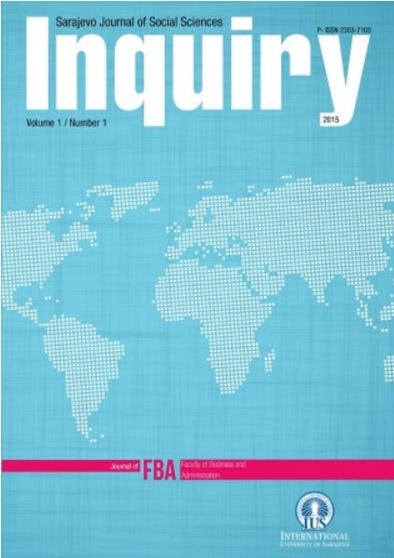Exploring Motivation of Construction Workers in Bosnia and Herzegovina
Exploring Motivation of Construction Workers in Bosnia and Herzegovina
Author(s): Burak Arman CanaSubject(s): Social Sciences, Economy, Business Economy / Management, Human Resources in Economy
Published by: International University of Sarajevo
Keywords: Motivation; construction industry; productivity; quality; final construction works;
Summary/Abstract: Aim: The aim of this paper is to explore motivation of construction workers in Bosnia and Herzegovina (B&H). The specific objectives of this original (primary) research were to develop employee-centric motivational model to improve productivity and quality of final construction works. Methods: Research methodology was comprised from the quantitative research method utilizing two structured survey instruments (first for managers and second for non-managers), each consisting of 14 items (four for descriptive and ten for inferential statistics). A field survey was carried out in cross-sectional time-frame study manner utilizing convenience sampling methodology. The questionnaire responses were collected from 130 respondents; managers and non-managers, working for the Cengiz construction company and it is B&H and international subsidiaries and contractors and sub-contractors. The research site was confined at B&H highway corridor 5c, in the vicinity of Tarcin and Vlakovo construction sites. Results: Our results were grouped in three categories: general motivation, carrier motivation and business motivation. These types of motivational factors are applicable to Maslow's, Alderfers's, Herzberg's, Reinforcement, Equity and Expectancy theories of motivation. They are congruent with prioritized motivational factors from Hewage's model. In order to establish whether there were any statistical differences exist between groups of respondents the researcher conducted parametric statistical tests, by constructing index variables for each dimension. This process produced three types of variables: general motivation index, carrier motivation index and business motivation index. The newly constructed variables were tested for normality and their distributions were confirmed as normal. T-test confirmed that there was no statistically significant difference between genders. Only, on the carrier motivation dimension, some differences were detected. This conclusion was additionally supported by the Pearson product-movement correlation coefficients. Those never approached conventional degree of significance of α=0.05, as the following result were attained (t=-1.541, p=0.126<0.05). Conclusion: In general, there seems to be suggestive evidence that flexible work hours and better worker-manager collaboration could be effective non-monetary factors for increase in motivation of construction workers, especially those who belong to 18 – 30 years age group. Hence, the recommendation for managers and supervisors would be to use communication and feedback to build trust between the employer and the employee, and to motivate employees in non-financial manner. This should have an immediate effect on the improved productivity.
Journal: Inquiry - Sarajevo Journal of Social Science
- Issue Year: 1/2015
- Issue No: 1
- Page Range: 103-113
- Page Count: 11
- Language: English

